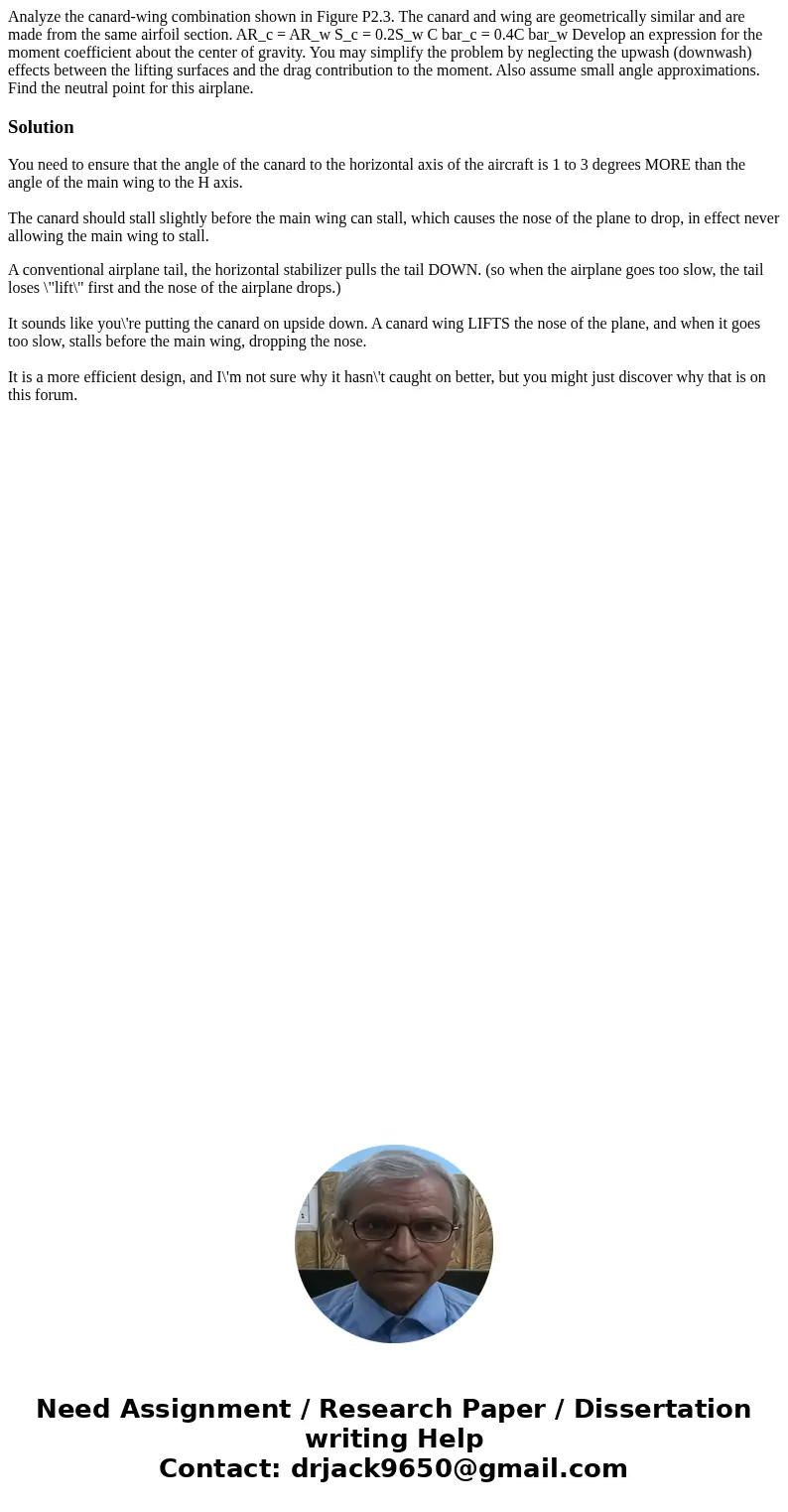Analyze the canardwing combination shown in Figure P23 The c
Solution
You need to ensure that the angle of the canard to the horizontal axis of the aircraft is 1 to 3 degrees MORE than the angle of the main wing to the H axis.
The canard should stall slightly before the main wing can stall, which causes the nose of the plane to drop, in effect never allowing the main wing to stall.
A conventional airplane tail, the horizontal stabilizer pulls the tail DOWN. (so when the airplane goes too slow, the tail loses \"lift\" first and the nose of the airplane drops.)
It sounds like you\'re putting the canard on upside down. A canard wing LIFTS the nose of the plane, and when it goes too slow, stalls before the main wing, dropping the nose.
It is a more efficient design, and I\'m not sure why it hasn\'t caught on better, but you might just discover why that is on this forum.

 Homework Sourse
Homework Sourse